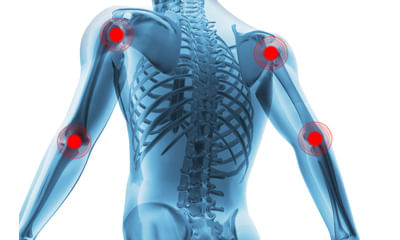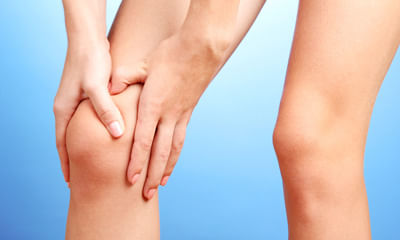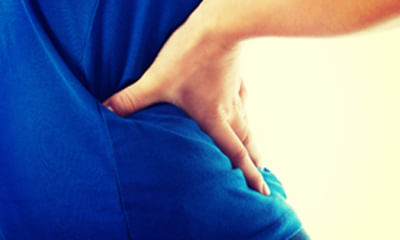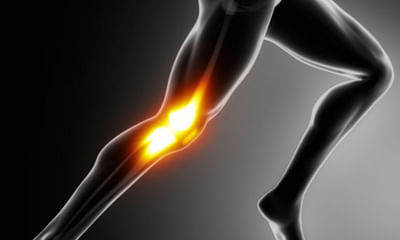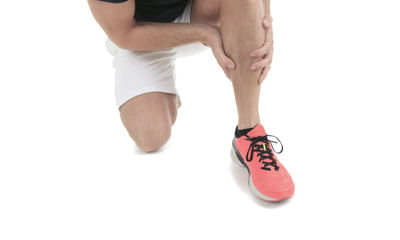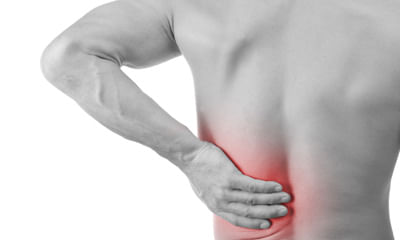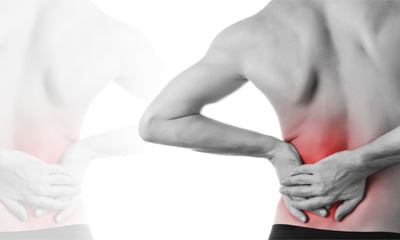Top Questions on Reducing Joint/Muscle Pains
I have low back pain and knee joints pain last 2 year hlab-27neg, mri was normal (carried out in 2022) esr crp normal. ...
Ask Free Question
Hi lybrate user ,Injuries, poor posture, or arthritis can all cause lower back and knee pain. Lower back pain is a common condition that can make it hard to exercise or perform daily activities. Individuals with lower back pain may put more pressure on their knees to compensate, which can lead to discomfort in the knee joints.The most common back ailments that cause pain in the knees are related to the sciatic nerve. If you have back pain and feel a shooting sensation originating from your lower back running down your leg and through your knee, your sciatic nerve is to blame. regards
My father in law has lost his sanity and has become very violent, he was hospitalized for hip replacement, there too he ...
Ask Free Question
Please use the following medicine for a period of two weeks and let me know about your condition by consulting me privately on Lybrate. 1. Merc sol 1m 10 drops in 1 cup of water
Sir my mom suffering from chronic shoulder pain from last month and can't be cured by any medicine. My mom is also a dia ...
Ask Free Question
Counslt to physio do regular exercises advised by physio avoid sleep on shoulders lower down sugar level apply hot pack and anlgesic gel thanks.
I am 27 years old, had my first dislocation of the right shoulder in 2015. Since then I have had multiple dislocations. ...
Ask Free Question
Hi lybrate user , Maintaining muscle strength and flexibility can help prevent shoulder dislocations. Once your shoulder is dislocated, physiotherapy may help prevent you from dislocating it in the future. Through restoring your shoulder's range of motion and physical strength, your risk for dislocation decreases. regards
Hello. My calves of both the legs are paining since 4-5 days. No injury nothing. It pains from below the knee to ankle. ...
Ask Free Question
Counslt to physio do streching of gastrosoleus drink much water wear soft sole shoes can go for x ray of feet for spur and uric acid test.
I am a 23 years male and I go to gym regularly. Around 2 weeks back my right wrist started hurting and now if I close my ...
Ask Free Question
Hello, even after proper physio treatment and rest, if the pain is same and feeling uncomfortable then you should go for the surgery.
If someone is having sle and taking high tablets daily with no joint pain or any sle symptoms when actually problem star ...
Ask Free Question
Someone actually cannot predict when it is going to worsen but yet there is two aspects of understanding it 1. Your disease activity is well controlled 2 . Your disease activity is not controlled ( what may precipitate it or land uh in 2. is any infections / non compliance with the medication/ ignorance and loss of follow up ) I hope uh are keeping well and best wishes
I am suffering from planter fasciitis in both my feet. However, it is more in my left foot —heal and outside of heal on ...
Ask Free Question
Consult with rheumatologist or orthopaedic doc for medicnes, also take Ultrasound therapy for a week, which helps in reducing pain and you will be suggested with the exercises to reduce pain.
Mine son is 6 year suddenly he feel lot of pain in right leg he is not able to lift it up and even not move he feel lots ...
Ask Free Question
Hi lybrate user ,this might be due to growing pain , Many children have pains in their legs without any obvious cause and these are often called growing pains. Even though the child can be in a lot of pain, no damage is happening to the child's bones or muscles, and growing pains can respond to simple treatments like physiotherapy . regards
There is a female of around 40 years she has heel pain (pricking pain) since two months what is the best treatment to gi ...
Ask Free Question
Minutes at a time. This is especially beneficial at the end of a long day or when you’ve spent a lot of time on your feet. Or, roll a frozen water bottle under your foot. This method incorporates a bit of massage, relieving tightness in the bottom of your foot. Massage. Massaging the arch of your foot helps to relieve pain and promote mobility. Use your fingers and knuckles to deeply massage your foot for 1 to 5 minutes at a time. One technique is to place both thumbs at the center line of your arch and move them to the outer edges of your feet. Inserts. Use cushion inserts in your shoes for additional support and cushioning. Inexpensive options can be purchased off the shelf. Wear supportive shoes with thicker soles and extra cushioning for additional support that can help to reduce tension in the plantar fascia. Kinesiology tape can be used to improve arch and heel support. Night splints. Many people find quick and effective results by using night splints. They can be worn while sleeping to stretch the plantar fascia. They help to keep the plantar fascia relaxed and prevent you from pointing your feet down. Exercise foot flex use your hand to pull your toes back toward your shin. Hold this position for about 30 seconds .do each side two to three times. Toe towel grab place a small towel under your foot. Curl your toes to grip the towel. Raise the front of your foot off the floor. Hold this position for a few seconds. Release the towel as you lift up your toes and spread them as far apart as possible. Heel and calf stretch to do this stretch: 1.stand facing a wall. 2.place your hands on the wall and move one foot back as far as you can comfortably. Toes on both feet should be facing forward, heels flat, with a slight bend in your knees. 3.lean into the stretch and hold for 30 seconds. You should feel the stretch in your back leg. 4.change legs and repeat. 5.do this stretch twice for both legs. Golf ball roll roll a golf baell under your right foot. Continue for up to 1 minute. Do each foot two to three times.

